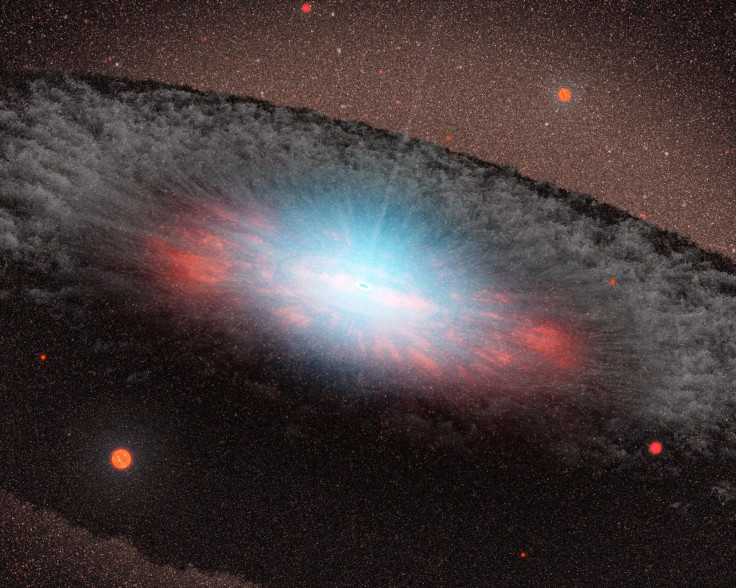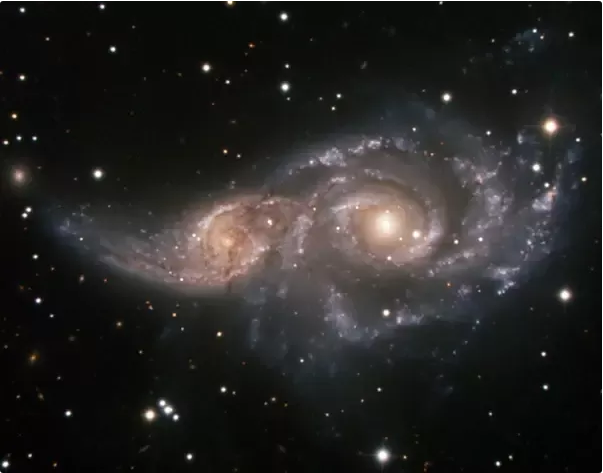Here's How Big A Massive Black Hole Can Actually Get

This question originally appeared on Quora. Answer by Martin Silvertant.
As the size of a black hole defined by the Schwarzschild radius relates to its mass, it’s only by acquiring more mass that a supermassive black hole will grow larger, as a greater mass means spacetime is curved over a larger area. Note however that the Schwarzschild radius doesn’t denote an actual surface, but the area beyond which spacetime is curved to such a degree that the escape velocity exceeds the speed of light. In other words, there is so much mass in such a small volume that the gravitational force curves spacetime to such extent that not even light can escape. As no light reflects, this is why a black hole is black.
Although it’s thought that supermassive black holes can grow indefinitely, there is a theoretical maximum that it will be able to grow by means of the conventional accretion disc method, where gas in close proximity to the supermassive black hole becomes gravitationally attracted, passes the photon sphere and accretes into a disc as the material spirals into the black hole—beyond its event horizon (the boundary beyond which light cannot escape). This upper bound is 50 billion M☉ (solar mass).[1]At that point—or usually way before that point has been reached—the gas in close proximity is exhausted, and the supermassive black hole stops acquiring more mass—except perhaps by tidally disrupting the occasional star that comes too close. Tidal disruption events are when a star comes too close to the black hole and is pulled apart by the black hole’s tidal forces.
But supermassive black holes will be able to go beyond that upper bound by means of black hole mergers, which follow from galactic mergers; as galaxies merge, at one point the supermassive black holes at the center of both galaxies will enter a gravitational dance, spiral into each other and eventually merge to become one bigger supermassive black hole. Note also that as galaxies merge, some gas and stars will get close to the supermassive black hole again, meaning there is once again material in close proximity to the black hole, of which at least some material will spiral into the black hole and once again it can acquire more mass.

As such, the current upper bound for the mass of supermassive black holes is merely a reflection of the current universe. After more time has passed and more galaxies have merged, that upper bound may increase somewhat. Supermassive black holes will never grow indefinitely however, as galactic mergers won’t occur indefinitely, as dark energy (the force which accelerates the expansion of space) drives most galaxies apart.





















